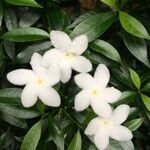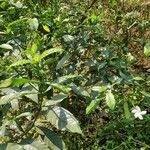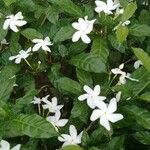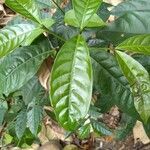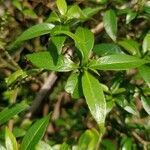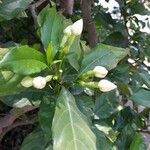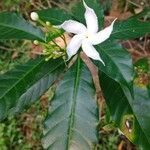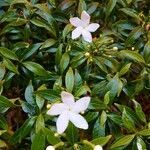| Therapeutic use
|
Anti-bacterial agents (bark), Antiviral agents (bark), Fever (bark), Gastrointestinal diseases (bark), Snake bites (bark), Analgesics (flower), Anthelmintics (flower), Anti-bacterial agents (flower), Anti-inflammatory agents (flower), Antioxidants (flower), Endophthalmitis (flower), Eye burn (flower), Eye diseases (flower), Pain (flower), Skin diseases (flower), Tachycardia (flower), Toothache (flower), Ulcer (fruit), Analgesics (leaf), Anthelmintics (leaf), Anti-bacterial agents (leaf), Antifungal agents (leaf), Antihypertensive agents (leaf), Anti-inflammatory agents (leaf), Antinematodal agents (leaf), Antioxidants (leaf), Antirheumatic agents (leaf), Antiviral agents (leaf), Conjunctivitis (leaf), Diabetes mellitus (leaf), Diuretics (leaf), Endophthalmitis (leaf), Furunculosis (leaf), Inflammation (leaf), Skin diseases (leaf), Toothache (leaf), Wounds and injuries (leaf), Anti-infective agents (plant cells/culture), Eye diseases (plant exudate), Inflammation (plant exudate), Toothache (plant exudate), Analgesics (root), Anthelmintics (root), Anti-bacterial agents (root), Anti-inflammatory agents (root), Antirheumatic agents (root), Arthralgia (root), Corneal diseases (root), Corneal opacity (root), Digestive system diseases (root), Eye burn (root), Jaundice (root), Pain (root), Paralysis (root), General tonic for rejuvenation (root), Scorpion stings (root), Skin diseases (root), Snake bites (root), Toothache (root), Urination disorders (root), Antinematodal agents (shoot), Convulsion (unspecified), Cough (unspecified), Diarrhea (unspecified), Febrifuge (unspecified), Ophthalmia (unspecified), Sore (unspecified), Toothache (unspecified), Wound (unspecified), Abdomen (unspecified), Anodyne (unspecified), Poison (unspecified), Refrigerant (unspecified), Rhinosis (unspecified), Skin (unspecified), Vermicide (unspecified), Hemostat (unspecified), Herpes (unspecified), Wart (unspecified), Fever (unspecified), Tumor(Abdomen) (unspecified), Vermifuge (unspecified), Eye (unspecified), Brain diseases (unspecified), Endophthalmitis (unspecified), Epilepsy (unspecified), Eye diseases (unspecified), Eye infections (unspecified), Hematologic diseases (unspecified), Intestinal diseases, parasitic (unspecified), Liver diseases (unspecified), Muscle weakness (unspecified), Neoplasms (unspecified), Paralysis (unspecified), Scorpion stings (unspecified), Skin diseases (unspecified), Splenic diseases (unspecified), Urination disorders (unspecified), Vomiting (unspecified), Cooling effect on body (wood)
|
